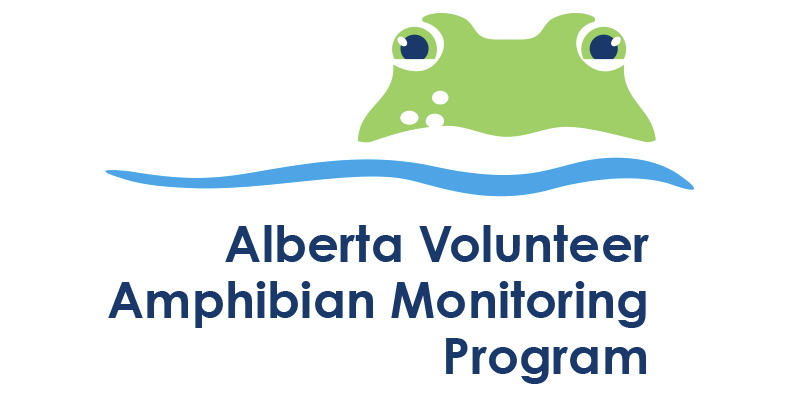Amphibian Monitoring in
Jasper National Park
By Ward Hughson, Aquatic Specialist, JNP and Brenda Shepherd, Park Ecologist, JNP
Last spring, 27 staff and volunteers completed an intensive 3-week amphibian monitoring survey of the Athabasca montane region of Jasper National Park (JNP). The park is home to 5 species of amphibians. These include the wood frog, spotted frog and boreal chorus frog, the Western toad as well as the long-toed salamander. Investigating the status and trends of these amphibian populations is one way JNP measures and reports on the health of its aquatic ecosystems.
Some studies attempt to quantify amphibian trends by measuring abundance. These can be time-consuming and the information gained, though of biological interest, cannot necessarily be translated accurately to the larger landscape or interpreted over time. As a result, JNP opted to use a different technique known as “occupancy modeling.” For a detailed explanation of occupancy modeling and its advantages we highly recommend this website fact sheet put out by the United States Geological Survey (USGS).
In our case, we visit 59 randomly chosen potential amphibian breeding sites 3 times each within a 3-week period, for a total of 177 individual visits each survey year. Sites include lakes, as well as perennial and ephemeral ponds. Our surveys are scheduled to coincide with the time all park amphibians would most likely be present at these sites as they are all obligate water breeders. In JNP breeding generally occurs from late April to mid-May but may vary up to two weeks any given year. These surveys are repeated every 3 years so that long-term trends may be identified.
Before going out into the field, all observers are put through a training session covering both species identification and field methodology. Then, in the field, surveyors working in teams of 2 walk the perimeter of each site. One surveyor covers the upland area from the pond edge while the other searches the pond edge and a short distance into the pond. When observations of calls, eggs and adult amphibians are made, they are recorded by pond location on site-specific datasheets. To eliminate or minimize the possibility of species misidentification, photographs are taken of all eggs and adult amphibians. Once back in the office, field photographs are crosschecked against datasheet observations before they’re entered into the park’s amphibian database.
Our primary field objective, as per occupancy modelling, is simply to record the presence of a species during each site visit. One of the reasons why we make 3 site visits (even if all species are detected on a first visit) is to make sure a species not recorded as present is actually not there, as opposed to just not seen. These repeated sightings or lack of sightings enable us to derive a measure of “detectability,” or in simple terms, how good we are at finding an amphibian species if it is there.
While our program is still in its infancy (having completed just 2 field seasons), we have noticed some interesting trends which have previously been identified by other researchers. In particular, we noticed the relative lack of amphibians (especially long-toed salamanders and wood frogs) at sites where fish are present. We note that this relationship did not hold true for Western toads. (Note: As suggested by previous research, toxins in toad eggs and adult toads may deter or prevent predation on this species).
Fish species present in our study area include lake chub, Northern pike, brook trout and rainbow trout. This relationship has implications for JNP aquatic management. Fish stocking programs began in 1917 and continued unabateduntil 1988. During that time over 5.3 million non-native fish were introduced into over 143 park lakes, rivers and streams, most of which were originally fishless. In addition, over the years, recreational anglers have released live bait fish (minnows) into many lakes, and unofficially transferred sport fish between waters. We assume that amphibian populations and perhaps amphibian species distribution in the park has been heavily impacted by these activities.
Through our work we are also examining how occupancy, colonization and extinction probabilities are related to the number of nearby potential breeding sites and other site variables. We hope to report more on these aspects in the near future.
We encourage anyone seeking additional information or volunteer opportunities in Jasper National Park’s amphibian research to contact us.

